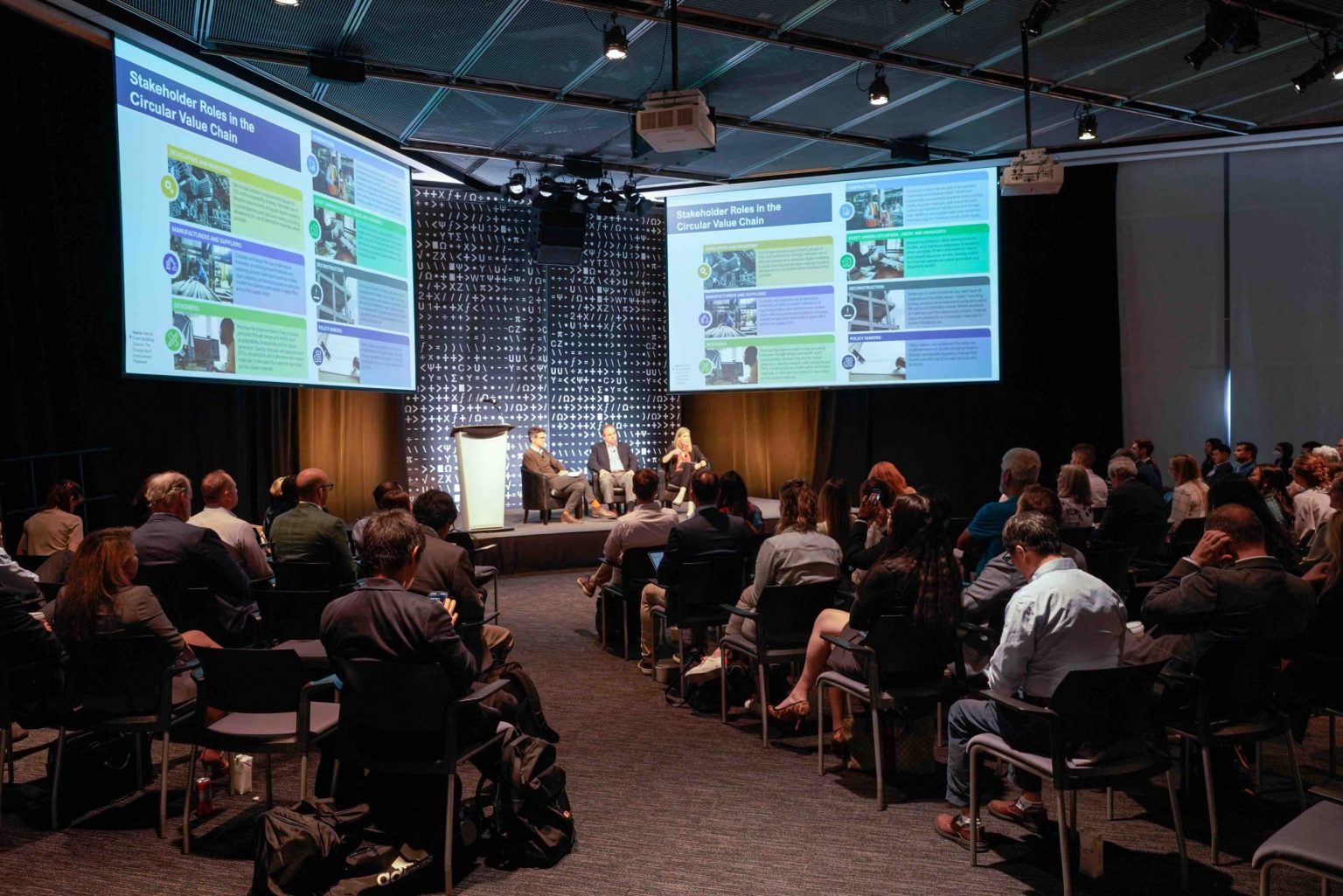
The 2023 World Real Estate Forum
Annual conference examined how ESG standards in the real estate industry enhance sustainability and profit for all
Environmental, social, and governance (ESG) metrics and standards are meant to measure the responsibility of the actions of a company or a project. But what data is used to provide ESG metrics is variable across industries and even across companies within the same industry. Similarly, the weighting of data creates more variance across the assessment of ESG rankings. Examples of variance in how different metrics impact ESG scores include underlying assumptions such as weighting operational carbon as the most important element of a project’s environmental impact versus embodied carbon, use of virgin resources, or impact to local ecosystems. The real estate industry accounts for an estimated 40% of total global carbon emissions and the intensity of demand for construction, globally the industry is building the equivalent square footage of the City of Chicago every two weeks for the next thirty years, means that successfully incorporating ESG goals is a critical element of a more just and sustainable future. Might findings from ongoing research at MIT and experiences of pioneering industry leaders, shared in open forum discussions, help clarify the definition and measurement of ESG goals for real estate and the built environment?
Returning to an in person format for the first time since the onset of the pandemic, the MIT/CRE World Real Estate Forum (WREF) gathered academics, students, entrepreneurs, and industry leaders for two days in June to explore how the definition of ESG imperatives are evolving and how the real estate industry has an opportunity to be at the forefront of reaching for new goals for healthier, happier, as well as a more resilient and sustainable built environment. Through seven sessions, moderated by MIT faculty, leaders in redefining sustainability, equity, building material science, circularity, design, and technology discussed how collaboration between academics and industry can accelerate positive behaviors.
“It was Albert Saiz who envisioned the Forum as an industry-recognized gathering of global real estate leaders hosted by MIT faculty and researchers, together examining the trends and opportunities in various countries and regions worldwide,” said Steve Weikal, who moderated the first keynote and led the MIT World Real Estate Forum since 2016. “Over time, the program evolved to focus on the intersection of technology, innovation and the built environment – a theme that MIT is uniquely positioned to explore.”
Generating Action with Industry Leaders
The composition of the WREF sessions’ speakers represented a guiding principle of MIT/CRE, bringing together innovative practitioners in the real estate industry with MIT faculty engaged in matched research in order to produce discussions focused on actionable pathways for advancing the field. For example, Circularity in the Built Environment, one of the audience’s most highly rated panels, featured Julia Gisewite of Turner Construction, Randy Kirchain from MIT Concrete Sustainability Hub (CSHub) and MIT/CRE’s Fabio Duarte.
“The WREF helped validate our strategic direction by showcasing emerging technologies, innovations, policies and trends that support increased circularity for our building processes and materials.”
Julia Gisewite (Turner Construction)
“Circularity is very synergetic with ESG goals like carbon reduction, biodiversity, and human health and wellbeing. And it can help create community partnerships. There is a business case for circularity; reuse can offset increasing material prices, disposal costs, and neutralize lead times. When there is demonstrable market value for reused materials, that will be a significant incentive for others to also adopt more circularity in their practices,” said Gisewite, Chief Sustainability Officer at Turner Construction. “The WREF helped validate our strategic direction by showcasing emerging technologies, innovations, policies and trends that support increased circularity for our building processes and materials.”
Turner, an international construction services company, centered ESG in their organizational culture, giving them more flexibility to explore new practices in their projects such as planning for greater circularity in their building materials and designs. Turner’s willingness to push ESG goals for the industry were mirrored by Gisewite’s fellow session speakers, Durate and Kirchain, who discussed possibilities for the field to expand in scope and efficiency through the research currently being conducted at MIT. Kirchain, the director of CSHub, described how advancements in material science and design might introduce more capacity for circularity in the life cycle of concrete structures. Durate, explored ongoing research at MIT/CRE documenting how to introduce more efficiency and locally source recycled building materials. Both approaches highlighted how novel practices and technological innovations developed at MIT could be harnessed by disruptive industry collaborators to propel the field forward.
Continuing a Legacy of Innovation and Collaboration
“This was also the first time we returned in-person, and we were not sure if the long absence of being in-person would make it difficult to foster the types of discussions and informal conversations that make WREF so special. Luckily, all we needed was the right people from industry combined with the research and entrepreneurial efforts of the MIT community and we saw the same excitement, drive, energy, and hope for shaping a better future for the real estate industry,” said Kairos Shen, executive director of MIT/CRE, and Siqi Zheng, faculty director of MIT/CRE. “The WREF continues to offer an opportunity for the center to connect with industry collaborators, showcasing innovative efforts in the field with new developments in research building upon those innovations, all seeking to address pressing global issues such as the climate crisis, lack of access for affordable housing, and ensuring the benefits of the deployment of more technology in our built environment is shared by all”



